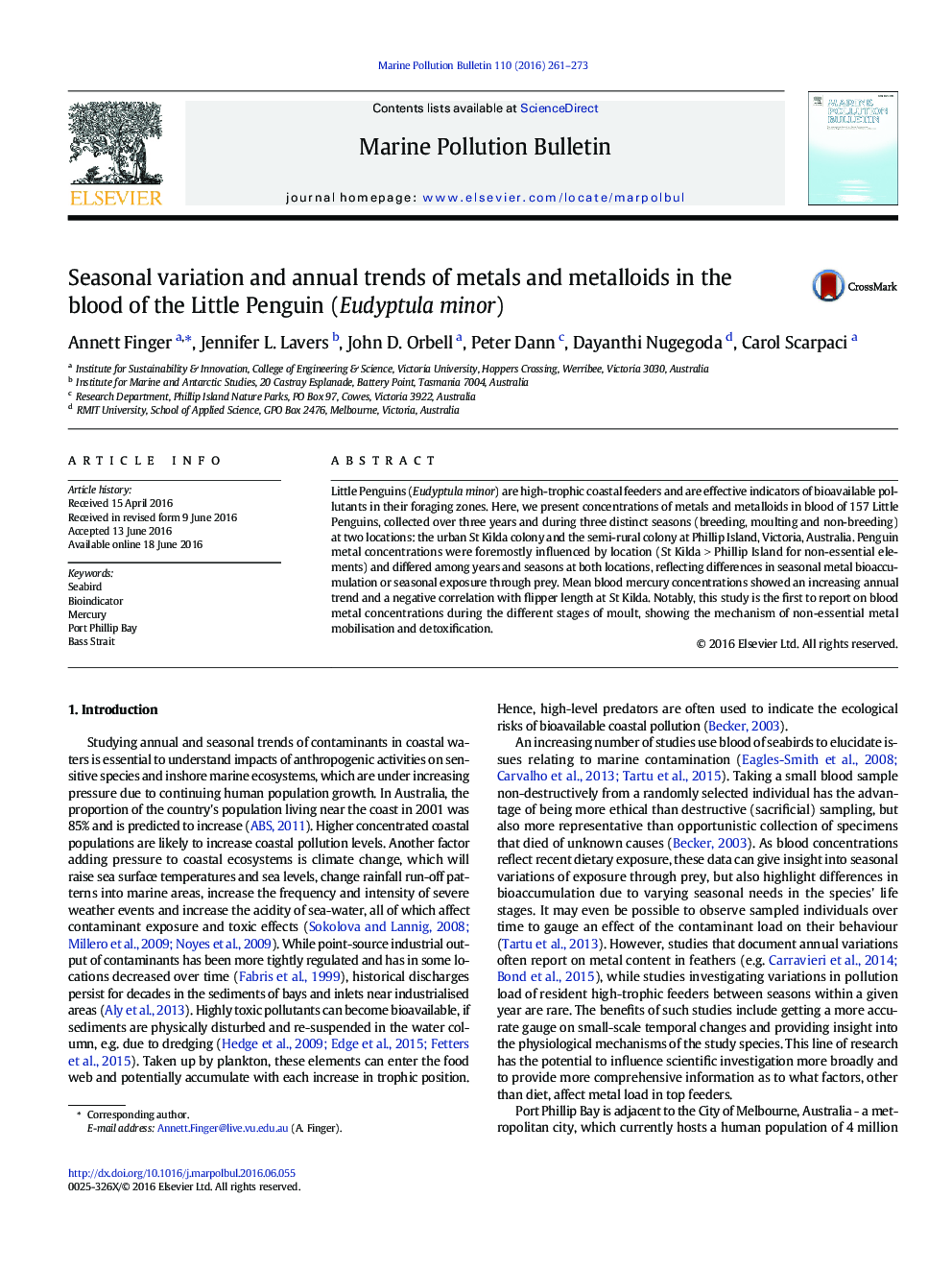| Article ID | Journal | Published Year | Pages | File Type |
|---|---|---|---|---|
| 6355661 | Marine Pollution Bulletin | 2016 | 13 Pages |
â¢Metals and metalloids measured in penguin blood over three years.â¢Arsenic, mercury and lead significantly higher at urban colonyâ¢Mercury showed increasing annual trend at urban colony.â¢Penguin flippers shorter at urban colony and correlate with mercury.â¢Within-moult variations show metal mobilisation and detoxification.
Little Penguins (Eudyptula minor) are high-trophic coastal feeders and are effective indicators of bioavailable pollutants in their foraging zones. Here, we present concentrations of metals and metalloids in blood of 157 Little Penguins, collected over three years and during three distinct seasons (breeding, moulting and non-breeding) at two locations: the urban St Kilda colony and the semi-rural colony at Phillip Island, Victoria, Australia. Penguin metal concentrations were foremostly influenced by location (St Kilda > Phillip Island for non-essential elements) and differed among years and seasons at both locations, reflecting differences in seasonal metal bioaccumulation or seasonal exposure through prey. Mean blood mercury concentrations showed an increasing annual trend and a negative correlation with flipper length at St Kilda. Notably, this study is the first to report on blood metal concentrations during the different stages of moult, showing the mechanism of non-essential metal mobilisation and detoxification.
Graphical abstractDownload high-res image (97KB)Download full-size image
